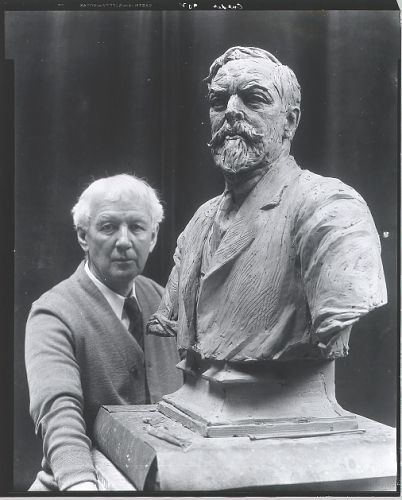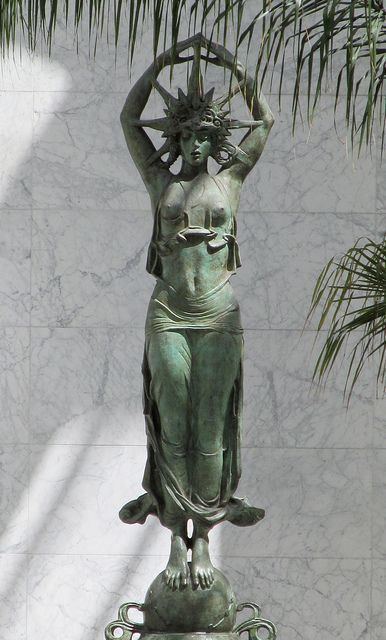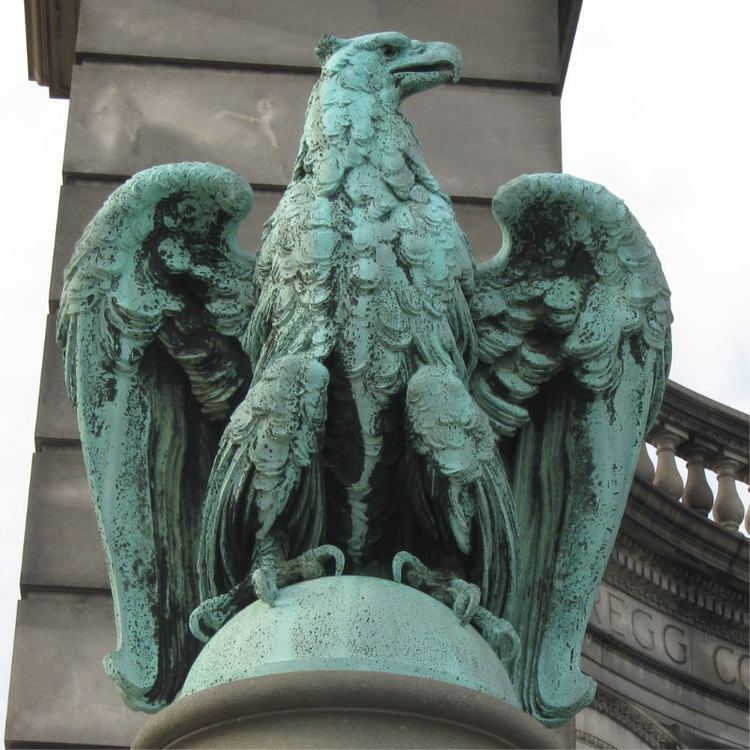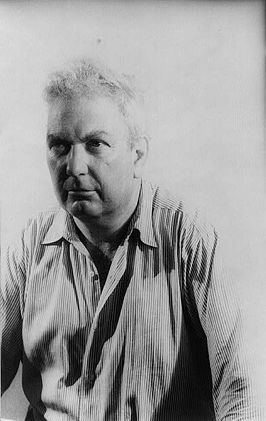Nationality American Children Alexander Calder | Parents Alexander Milne Calder Name Alexander Calder | |
 | ||
Born January 11, 1870 ( 1870-01-11 ) Notable work Washington as PresidentSwann Memorial FountainLeif Eriksson Memorial Died January 7, 1945, New York City, New York, United States People also search for Alexander Calder, Alexander Milne Calder, Nanette | ||
Museum without walls audio sundial by artist alexander stirling calder
Alexander Stirling Calder (January 11, 1870 – January 7, 1945) was an American sculptor and teacher. Son of the sculptor Alexander Milne Calder and father of the sculptor Alexander (Sandy) Calder, his best-known works are George Washington as President on the Washington Square Arch in New York City, the Swann Memorial Fountain in Philadelphia, and the Leif Eriksson Memorial in Reykjavík, Iceland.
Contents
- Museum without walls audio sundial by artist alexander stirling calder
- Museum without walls audio shakespeare memorial by artist alexander stirling calder
- Education and career
- Selected works
- Architectural sculpture
- References

Museum without walls audio shakespeare memorial by artist alexander stirling calder
Education and career

Calder was born in Philadelphia, Pennsylvania, in 1870. At the age of 16, A. Stirling Calder attended the Pennsylvania Academy of Fine Arts where he studied under Thomas Eakins. He apprenticed as a sculptor the following year, working on his father's extensive sculpture program for Philadelphia City Hall, and is reported to have modeled the arm of one of the figures. In 1890, he moved to Paris where he studied at the Académie Julian under Henri Michel Chapu, and then was accepted in the École des Beaux-Arts where he entered the atelier of Alexandre Falguière.

In 1892 he returned to Philadelphia and began his career as a sculptor in earnest. His first major commission, won in a national competition, was for a larger-than-life-size statue of Dr. Samuel Gross (1895–97) for the National Mall in Washington, D.C.. Calder replicated the pose of Dr. Gross from Eakins's 1876 painting The Gross Clinic. That was followed by a set of twelve larger-than-life-size statues of Presbyterian clergymen for the facade of the Witherspoon Building (1898–99) in Philadelphia.

Throughout his career he was frequently a teacher, variously teaching sculpture or anatomy at the Pennsylvania Academy of the Fine Arts, the Pennsylvania Museum School of Industrial Art in Philadelphia, the National Academy of Design in NYC and the Art Students League of New York. In 1906, he was elected into the National Academy of Design as an Associate member, and became a full member in 1913.

He contracted tuberculosis in 1906, and moved to Arizona and then California, for his health. In Pasadena, he modeled architectural sculpture for the Throop Polytechnic Institute (now the California Institute of Technology). He returned to the east coast in 1910.

In 1912, he was named acting-chief (under Karl Bitter) of the sculpture program for the Panama-Pacific Exposition, a World's Fair to open in San Francisco, California in February 1915. He obtained a studio in NYC and there employed the services of model Audrey Munson who posed for him – Star Maiden (1913–15) – and a host of other artists. For the Exposition, Calder completed three massive sculpture groups, The Nations of the East and The Nations of the West, which crowned triumphal arches, and a fountain group, The Fountain of Energy. Following Bitter's sudden death in April 1915, Calder completed the Depew Memorial Fountain (1915–19) in Indianapolis, Indiana.

Hermon Atkins MacNeil and Calder were commissioned to create larger-than-life-size sculptures for the Washington Square Arch in New York City. George Washington as Commander-in-Chief, Accompanied by Fame and Valor (1914–16) was sculpted by MacNeil; and George Washington as President, Accompanied by Wisdom and Justice (1917–18) by Calder. These are sometimes referred to as Washington at War and Washington at Peace.
He sculpted a number of ornamental works for "Vizcaya", the James Deering estate outside Miami, Florida. These included the famous Italian Barge (1917–19), a stone folly in the shape of a boat, projecting into Biscayne Bay.
Two of his major commissions of the 1920s were the Swann Memorial Fountain (1920–24), and the architectural sculpture program for the University of Pennsylvania Museum of Archaeology and Anthropology (completed 1931), both in Philadelphia.
He was one of a dozen sculptors invited to compete in Oklahoma's Pioneer Woman statue competition in 1927, which was won by Bryant Baker. That year he was also commissioned by the Berkshire Museum to sculpt the woodwork and fountain of the Museum's Ellen Crane Memorial Room in Pittsfield, Massachusetts. An institution that would also see his more famous son, Alexander, accept his first public commission in the 1930s with a pair of mobiles for the Museum's new theater.
In 1929, he won the national competition for a monumental statue of Leif Eriksson, to be given by the United States to Iceland in commemoration of the 1000th anniversary of the Icelandic Parliament. Standing before the Hallgrímskirkja, the Lutheran cathedral in Reykjavík, and facing west toward the Atlantic Ocean and Greenland, the Leif Eriksson Memorial (1929–32) has become as iconic for Icelanders as the Statue of Liberty is for Americans.
In 1945, Calder died of funnel chest syndrome, which he developed while working on his final sculpture, titled "Sicilian Nectar". He is buried in West Laurel Hill Cemetery in Bala Cynwyd, Pennsylvania. His memoir, Thoughts of A. Stirling Calder on Art and Life (1947), was published posthumously.
